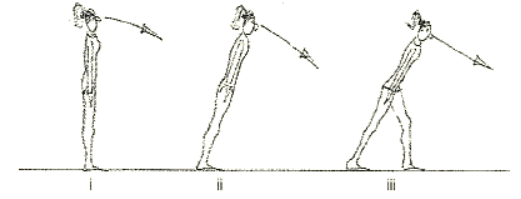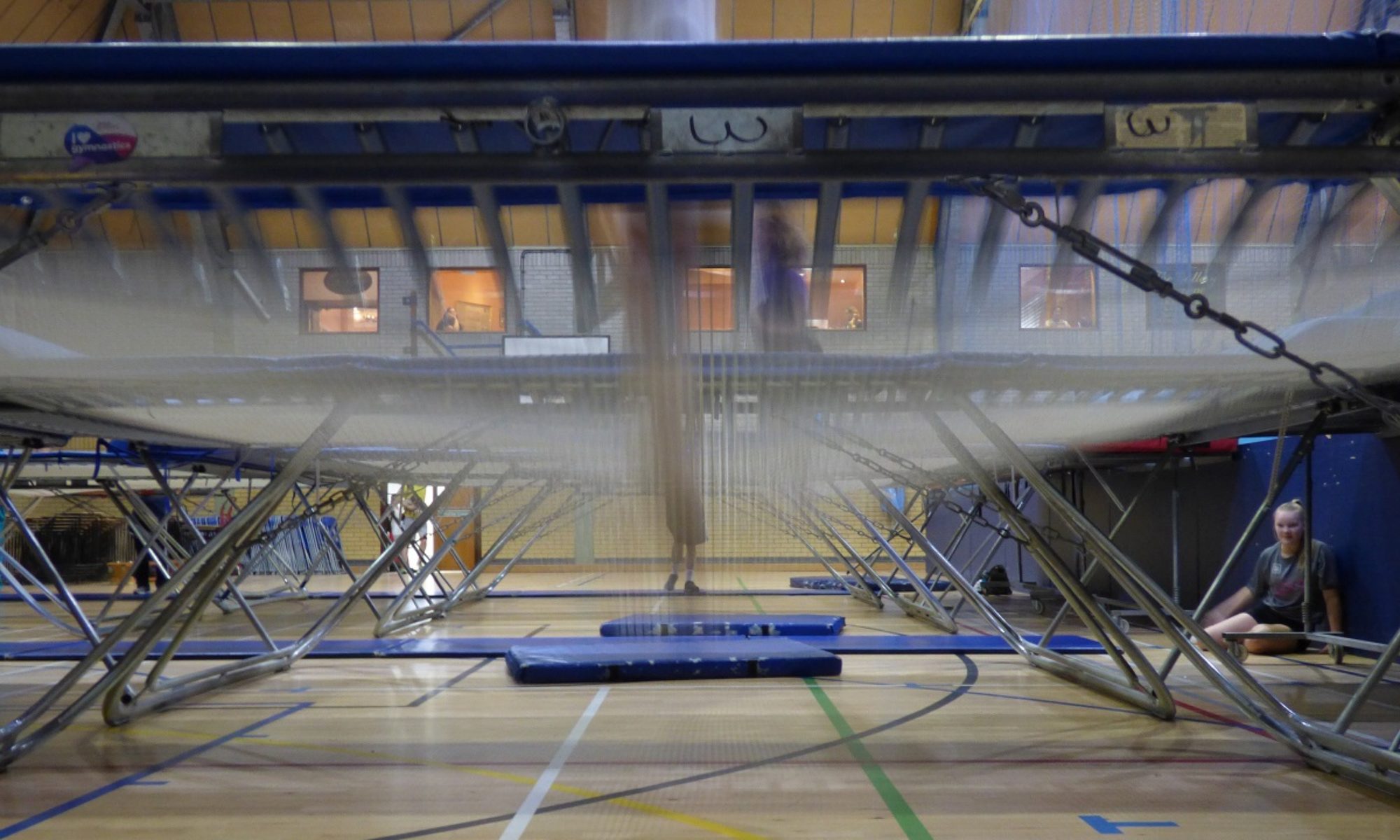Myths and Misconceptions
One of the first self improvement books on the market was called “How to Make Friends and Influence People.” My intention through these articles is most certainly to influence the way in which our sport is taught and coached but I fear that examples highlighted on this occasion may upset some of you. You may recognise some of your coaching phrases and identify with the situations described as being too near the truth to be comfortable. My aim is not to make friends however; I’ll settle for the influence part.
Much of our current coaching practice owes a lot to the pioneers of the sport who took their knowledge of floor tumbling and diving onto the trampoline. There is no doubt that a lot of this remains valid, but we have moved a long way in our understanding of trampoline-specific technique since the early days. A lot of this has been a by-product of the superior equipment which gives us much more time both in the bed and in the air to see what is actually happening. More importantly we can appreciate the timing sequence in which actions occur. Add to this the sophisticated video analysis now available and we have taken a quantum leap in our potential to help trampolinists achieve the highest standards.
Regrettably, the improved equipment also allows skills of considerable difficulty to be performed with poor technique and it is even possible to combine these skills into routines with very high tariffs. I regret to say that a great deal of British trampolining typifies this phenomenon. Ah well there goes a couple of friends already!
The early influences have left us with a sort of trampoline mythology which, if my experience of candidates attending my coach education courses is anything to go by, continues to gather believers at an alarming rate, I want to examine a number of these myths and misconceptions which, frankly, result in the coach guiding the performer with information that is as much as 100% wrong. Make no mistake about it, I too was guilty of perpetuating such misinformation until I was hit by the blinding light on the road to Damascus. Or was it Loughborough? Having largely eliminated the inaccurate descriptions, demos and analogies, I have been amazed by the progress trampolinsts can make when they are fed accurate information they can identify with and particularly which accords with the feelings they experience when trying to learn a new technique.
Let’s look at the examples of inaccurate coaching I promised and where I quote statements, believe me these are genuine. I could quote many more where the words are in a slightly different order but the sentiment is the same.
Quote: “You must drive out of the bed.”
Quote: “Straight leg drive out of the bed.”
The words used here are 100% wrong in describing the required action or indeed what we want the trampolinist to feel. The performer must drive the legs down into the bed thus enabling the arms and upper body to rise to the vertical posture prior to the powerful return of the bed. The legs then remain straight as the bed rises to deliver the classic bow and arrow effect through a body and legs held in optimum tension. For the trampolinist to do literally as requested, they would have to flex their knees when the bed was at full depression i.e. to be ready to try and drive out of the bed. This would result in “killing” the bed. Isn’t it just as well that performers do not obey these instructions to the letter but rely on what feels right?
I hold my hand up to this next one! It is an easy trap to fall into and sells the wrong idea. I am confident that I have now eliminated it from my repertoire. The coach demonstrates on the floor the action the gymnast must make through the landing and take off phases on the trampoline. This can be very effective in showing arm and upper body action but the demonstration involves the coach bending and straightening the legs to simulate the depression and rise of the trampoline. Again 100% wrong! The fact is that one can’t simulate the depression and rise of the bed while standing on the floor. All the coach can do is to demonstrate the arm and upper body actions while maintaining straight legs. Combine this demo with the statements highlighted in 1. above and we really are creating a myth. Once again we are relying on the performers kinaesthetic ability to sort out what feels right but this is hardly good coaching is it?
Quote: “You’ve got to get a bit more lift.”
The word “lift” makes sense to the coach because it describes the quality he/she wishes to see but it makes no sense to the gymnast in terms of the physical actions they need to make. To the performer “lift” can mean lift a body part eg., “Lift your arms/hips/legs/head etc.” To obtain the quality of lift which the coach is seeking requires the gymnast to drive the bed down, maintain straight legs, adjust the upper body angle, allow the arms to swing up and maintain good posture and optimum body tension throughout the rise of the bed. So when saying “You’ve got to get a bit more lift”, you might as well say “We’ll bring in a crane to hoist you up” as far as helpful technical coaching comments are concerned. The misuse of this word is widespread right up to High Performance Coach level and above. At best it is unhelpful. Focus on the things the trampolinist must do to achieve the quality you want to see.
Quote: “You need to put more power into the move.”
This is extremely common at all levels of coaching and it is generally an accurate statement when a trampolinist drops short or fails to achieve a straight kick out. Of the examples given so far this is the one which can have the most negative effect on performance. The performer probably agrees that the skill needs more power input but how will they interpret that? My experience is that they perceive the need to work harder, work faster or jump higher and certainly put in a more aggressive effort. This is 100% wrong. What is needed is a more accurate application of forces in the right directions, at the right times and it is the coach’s role to help the performer to understand and achieve this. Don’t work harder, work smarter. In the rare case where the pupil is applying all their forces in the right direction and at the right times but is still dropping short (yes it can happen) then there is a case for demanding a bit more muscular force, but without destroying the timing and direction of its application. That is a far cry from just asking for more power.
Quote: “Throwing your head back is making your back somersault travel.”
Firstly let me state that I can’t think of any situation in trampolining when it is desirable to throw your head back, but blaming the head action for travel is nonsense. Travelling in a backward somersault can only occur when the performer leans backwards off balance whilst in contact with the bed. Test this yourself by standing upright on the floor in a balanced position (Fig 1). Now topple backwards until you lose balance. Unless you are stupid enough to have fallen flat on your back you will have taken a backward step to regain your balance. You took a backward walking step, that is to say you started to travel backwards.

Stand upright and in balance as before and throw your head back but remain balanced (Fig 2). Did you have to take a backward step? To travel backwards you need to lose your balance backwards. Your head alone will not cause this loss of balance. Of course during a backward take off on the trampoline, leaning back and throwing the head back often work together but coaches tend to focus on the head as the root cause. Another classic piece of misinformation from the coach.

Quote: “You’re travelling forwards because you’re dropping your shoulders.”
This is the forward equivalent of the previous example and is equally fatuous. Go on, stand upright and balanced on the floor (Fig 3). Now topple forwards off balance. Unless you were daft enough to fall flat on your face you will have stepped forward to regain your balance. You took a walking step forwards. You started to travel forwards.

Once again stand upright and balanced (Fig 4). Bring your head and shoulders down to form a 90 degree bend at the hips but remain in balance. You have just “dropped you shoulders” but did you have to step forward? You can perform this bending action as vigorously as you like and you will not travel forwards unless you also lose balance. Of course, like the back somersault example, a gymnast performing a travelling forward somersault on the trampoline may lean off balance and bend at the hips (drop the shoulders) during take off. But why do we blame the action of the shoulders when that is not the root cause? Remember “bending” and “leaning” are not the same thing.

Quote: “Your barani is casting because you’re dropping one shoulder.”
Here we have the sideways equivalent of the previous two examples. You can test this with a similar standing exercise on the floor (Fig 5). Try dropping one shoulder sideways so that your body is in a sideways arch but remain balanced. Did dropping the shoulder make you fall sideways? Now from the same starting position lean your body sideways but don’t allow it to bend. Simply topple sideways off balance. You will start to travel sideways. That is what causes a straight barani (or any other skill) to cast across the bed. So once again blaming the dropped shoulder for the cast is missing the root cause but I can understand the confusion as sideways lean and dropping a shoulder often happen together.

There is plenty more where that came from but the seven examples highlighted are very common indeed and seriously inhibit the trampolinist’s learning. Many coaches are simply perpetuating these myths and misconceptions which abound in our sport. Their pupils in turn become coaches and the beliefs are further ingrained with the next generation of trampoline gymnasts.
How is it then that many of these coaches manage to put performers into national squads and teams if they are giving such misinformation to their charges? Consider the following which I believe is attributed to Galileo.
“One cannot teach a man (his word not mine) anything,
Galileo
one can only help him to find it within himself.”
The fact is that many performers are “finding it within themselves” and the coach’s role has been largely that of enabler, giving opportunities for learning in a safe environment. The pupil’s progress will be smoother, faster and reach higher levels if they are fed accurate information based on detailed understanding. No matter how competent the coach, gifted performers will always find solutions “within themselves”, but this essential quality can flourish best without the impediments placed in its way by thoughtless coaching based on myth and misconception.
If you recognise any of your coaching phrases or notions in this article and it’s upset you, try to make a change for the better. I may not have made a friend but perhaps I’ve influenced the way you coach.
© Jack Kelly

